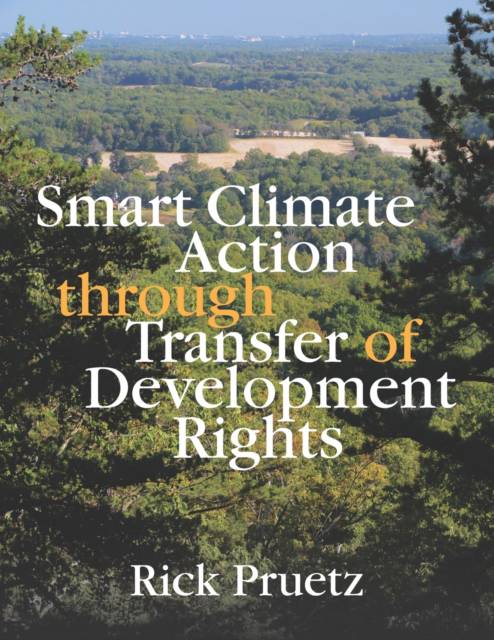
- Afhalen na 1 uur in een winkel met voorraad
- Gratis thuislevering in België vanaf € 30
- Ruim aanbod met 7 miljoen producten
- Afhalen na 1 uur in een winkel met voorraad
- Gratis thuislevering in België vanaf € 30
- Ruim aanbod met 7 miljoen producten
Zoeken
€ 25,45
+ 50 punten
Omschrijving
Land use is essential to climate action. We need diverse, compact communities where people can meet their daily needs without a car. We need to preserve our farms, forests, and wetlands, as well as maximize their ability to sequester carbon. We need to secure the embedded energy in older buildings, safeguard our water, restore biodiversity, and adapt to the growing threat from wildfires, floods, and sea level rise. By accomplishing any one of these goals, we often receive many other benefits in addition to the mitigation of greenhouse gases and adaptation to the growing threats of climate change. Transfer of development rights, or TDR, is a cost-effective way of steering growth away from places needed for climate action and into locations where development can be safely and efficiently accommodated. Unlike other preservation tools, TDR is primarily powered by private sector profits rather than taxation. In addition, jurisdictions themselves can engage in the TDR process to transform a limited investment into a perpetual revolving fund for preservation. Smart Climate Action profiles 282 TDR programs and highlights how this market-based tool can and has been used to preserve greenbelts, forests, farms, wetlands, and landmarks as well as reduce vulnerability to wildfire, floods, sea level rise, and water scarcity. Developing a successful TDR program requires extensive community engagement and political will. However, the cost of using TDR for climate action remains much lower than the cost of inaction. Rick Pruetz is a former city planner and planning consultant who continues to write about sustainability in general and TDR in particular. He has authored six books including Lasting Value: Open Space Planning and Preservation Successes and Ecocity Snapshots: Learning from Europe's Greenest Places.
Specificaties
Betrokkenen
- Auteur(s):
- Uitgeverij:
Inhoud
- Aantal bladzijden:
- 210
- Taal:
- Engels
Eigenschappen
- Productcode (EAN):
- 9780578990200
- Verschijningsdatum:
- 20/09/2021
- Uitvoering:
- Paperback
- Formaat:
- Trade paperback (VS)
- Afmetingen:
- 216 mm x 279 mm
- Gewicht:
- 498 g

Alleen bij Standaard Boekhandel
+ 50 punten op je klantenkaart van Standaard Boekhandel
Beoordelingen
We publiceren alleen reviews die voldoen aan de voorwaarden voor reviews. Bekijk onze voorwaarden voor reviews.











